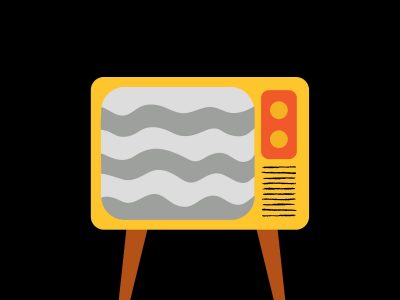Content warning: This article discusses eating disorders.
Despite society’s more evolved understanding of eating disorders and the human body, TV shows still often make jokes about appearance or appetite without realizing the influence these comments possess. In real life, having an eating disorder or body dysmorphia is harmful and should be treated as such by the entertainment industry.
The ABC show “American Housewife” is about plus-sized mother Katie Otto and her family’s adventures in a very wealthy, privileged town. A constant in the show is Katie’s awareness that everyone around her is teasing her or commenting about her weight and appearance, making her angry and overly self-aware.
The moms in the show consistently comment upon Katie’s eating habits and her ability to exercise, reinforcing the societal idea that it’s wrong to be above a “size six.” But beauty comes in all shapes and sizes, and one body type can’t be the ideal people base their own body image off of.
Because of the indoctrinated belief that people must look a certain way, shows such as “American Housewife” have added to the stereotype that heavier people are too lazy to change their figures. However, we must recognize that “healthy” is not a number nor a diet we see influencers touting on social media.
Although a few years old, the Netflix romantic-comedy “Sierra Burgess is a Loser” also perpetuates the belief that beautiful, plus-sized main characters do not exist because they are an anomaly. It completely undercuts the notion that beauty comes from within. For teenagers — the film’s target audience — the subtle message that a person’s body can get in the way of a romantic relationship can be potentially harmful.

Hospitalizations for eating disorders for children under 12 have increased 119% in the last 10 years. In adolescents, anorexia is the third most prevalent chronic condition next to asthma and obesity — and several teen TV characters suffer from it. Kaylie Cruz from “Make It or Break It” and Cassie Ainsworth from “Skins” are two prominent examples. Additionally, Marley Rose from “Glee” and Blair Waldorf from “Gossip Girl” are two well-known teen characters who present symptoms of bulimia nervosa.
While both shows are not currently on the air, their fanbase and audience remains strong to this day. These shows inconsistently referenced bulimia to indicate the complexities behind having an eating disorder through Marley and Blair.
Unfortunately, eating disorders aren’t something that can conveniently disappear. By depicting eating disorders in this unresolved way, the shows made light of them and downplayed their severity.
The glamorization of eating disorders hurts teens whose perceptions are molded by these idolized characters. For example, if they gloss over what real recovery looks like, people watching might expect to remain healthy despite struggling with an eating disorder for months, when in reality, they can cause very severe health impacts.
Additionally, television rarely captures other mental health issues that might also be present in individuals with eating disorders, such as other self-destructive behaviors.
When watching thin people portray a character with an eating disorder, void of thoughtful writing, already susceptible audience members might get triggered. Shows that depict eating disorders can act as triggers for those already struggling with body image issues, according to the Center for Discovery Treatment Center.
This issue expands far past TV shows: Several romantic-comedies from the ’90s and early 2000s depict a protagonist finding love after losing weight, similar to the implication in “Sierra Burgess” that a plus-sized protagonist can’t attract a love interest until after conning him. This notion is extremely troublesome because finding love and being plus-sized are not mutually exclusive.
On the up side, movies such as the 2018 Netflix Original “Dumplin’” are attempting to change the narrative by introducing a plus-sized woman falling in love without needing to be changed first. Movies have also become more inclusive by featuring plus-sized actors and actresses.
Shows need to be respectful toward individuals who are struggling or have struggled with eating disorders and body image issues, because the severity of the condition and potential for individuals to be triggered is not something to be made light of. We live in a society where perception is extremely warped by body-editing apps, so people seek representation in movies or television.
If the entertainment industry completely dismisses the importance of a body-diverse cast, it not only erases representation but also perpetuates unhealthy and unrealistic standards. The movie industry should continue to move toward body diversity so people are able to relate to these characters, but should also address the insensitivity to eating disorders and body image issues present in too many works.






















































































































